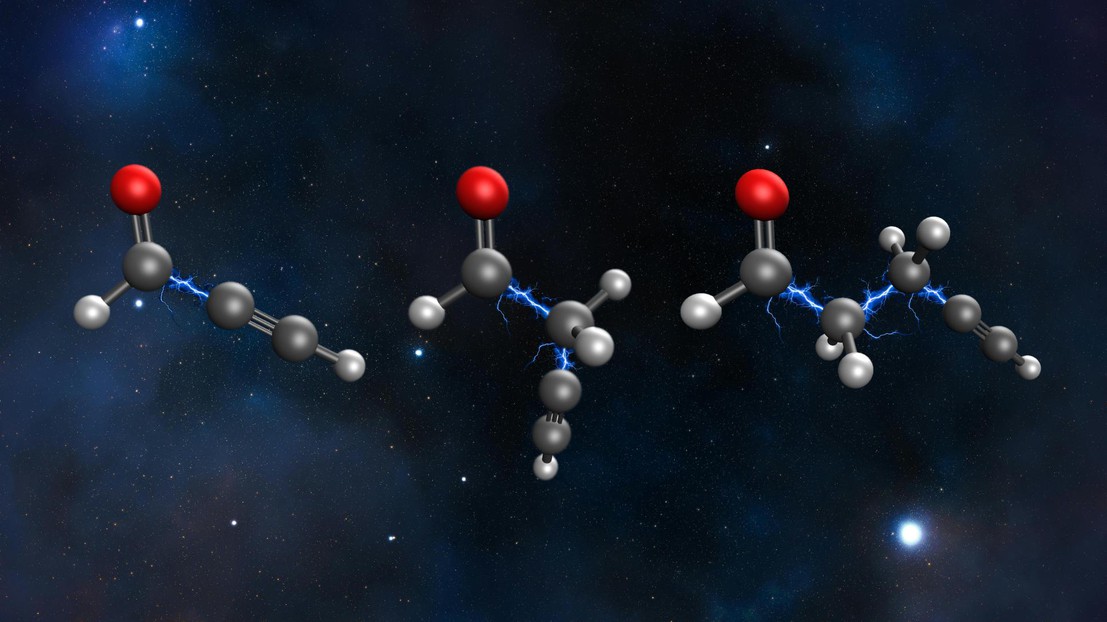2025-06-04 スイス連邦工科大学ローザンヌ校(EPFL)
 Inserting –CH₂– chemical groups into propynal increases molecular size and flexibility, yet unexpectedly favors the persistence of quantum effects. Credit: Alan Scheidegger (EPFL)
Inserting –CH₂– chemical groups into propynal increases molecular size and flexibility, yet unexpectedly favors the persistence of quantum effects. Credit: Alan Scheidegger (EPFL)
<関連情報>
- https://actu.epfl.ch/news/how-bigger-molecules-can-help-quantum-charge-flow-/
- https://www.pnas.org/doi/10.1073/pnas.2501319122
分子のサイズと柔軟性を高めると、デコヒーレンスを減少させ、電荷移動を延長できるのか? Can increasing the size and flexibility of a molecule reduce decoherence and prolong charge migration?
Alan Scheidegger, Nikolay V. Golubev, and Jiří J. L. Vaníček
Proceedings of the National Academy of Sciences Published:May 30, 2025
DOI:https://doi.org/10.1073/pnas.2501319122
Significance
Together with tunneling and entanglement, coherence belongs among the hallmarks of quantum mechanics and among the prerequisites for building quantum devices. In attochemistry, the loss of electronic coherence induced by nuclear motion prevents the control of electron dynamics after a few femtoseconds. Because decoherence is responsible for the transition from quantum to classical behavior in macroscopic systems, one expects faster decoherence in larger and more flexible molecules. We report a surprising result that extending a molecule can prolong not only coherence but also charge migration. We explain this by separating the contributions of individual modes to decoherence. As the size is not prohibitive, our findings suggest that many more molecules than previously thought could be suitable for applications exploiting coherence.
Abstract
Coherent superposition of electronic states, created by ionizing a molecule, can initiate ultrafast dynamics of the electron density. Correlation between nuclear and electron motions, however, typically dissipates the electronic coherence in only a few femtoseconds, especially in larger and more flexible molecules. We, therefore, use ab initio semiclassical dynamics to study decoherence in a sequence of analogous organic molecules of increasing size and find, surprisingly, that extending the carbon skeleton in propynal analogs slows down decoherence and prolongs charge migration. To elucidate this observation, we decompose the overall decoherence into contributions from individual vibrational modes and show that: 1) The initial decay of electronic coherence is caused by high- and intermediate-frequency vibrations via momentum separation of nuclear wavepackets evolving on different electronic surfaces. 2) At later times, the coherence disappears completely due to the increasing position separation in the low-frequency modes. 3) In agreement with another study, we observe that only normal modes that preserve the symmetry of the molecule induce decoherence. All together, we justify the enhanced charge migration by a combination of increased hole-mixing and the disappearance of decoherence contributions from specific vibrational modes—CO stretching in butynal and various H rockings in pentynal.


